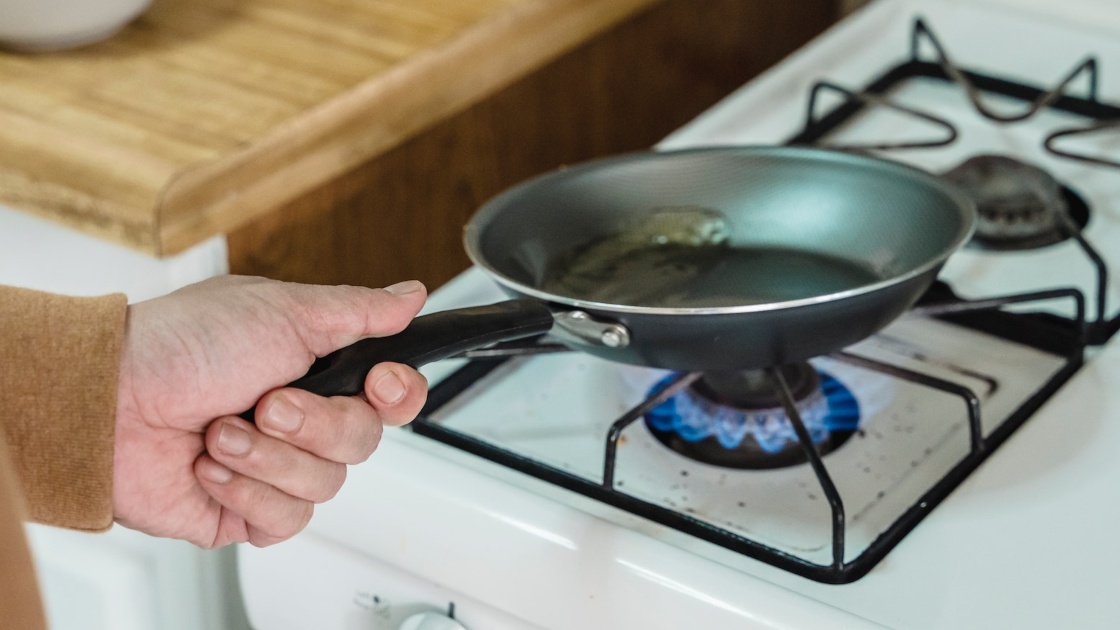
 With inflation standing at five times above the official target, the Bank of England is expected to raise interest rates in its 15 December meeting. Cesar Revoredo-Giha and Wisdom Dogbe write that increasing interest rates to dampen demand is unlikely to be enough in the fight against food inflation, since prices are influenced by the cost of energy and other inputs worldwide.
With inflation standing at five times above the official target, the Bank of England is expected to raise interest rates in its 15 December meeting. Cesar Revoredo-Giha and Wisdom Dogbe write that increasing interest rates to dampen demand is unlikely to be enough in the fight against food inflation, since prices are influenced by the cost of energy and other inputs worldwide.
It has never been more important to track the evolution of food prices as in the current context of the cost-of-living crisis. As widely announced, food inflation is at its highest in 45 years. Higher food prices tend to increase inequality and hurt consumption, and monetary policy alone may not be able to address the problem.
The latest inflation figures (October) show that, as a category, food and non-alcoholic drinks had the second highest annual price increase within the consumer price index (16.2 per cent compared with 11.1 per cent for the overall index). The category was only surpassed by the “housing, water, electricity, gas & other fuels” group, which reached 26.6 per cent. This is significant. According to the latest figures for family spending in the UK, the 10 per cent poorer households (as measured by gross income) spend about 14 per cent of their money on food and about 24 per cent on housing (net) and fuel & power.
As the overall inflation rate stands at about five times the Bank of England’s target of 2 per cent, one should expect the Bank to raise interest rates, in an attempt to contract consumers’ purchasing power, reducing excess demand. This “medicine” was applied not long ago in November 2021, when the interest rate rose to 3 per cent. The next revision is expected to be in less than a month (15 December). However, as recognised by the chancellor in his autumn statement, inflation also has an important cost component due to price rises in energy and other inputs worldwide. In this context, by looking more closely at the evolution of food prices and some of their comprising categories, we can highlight some of the factors and, even more importantly, get an idea of what to expect.
Figure 1 traces the evolution of the UK’s annual food inflation and the overall index evolution since 2019. Until very recently (June 2022), food inflation had been below or very close to the overall inflation. However, since then food inflation rates are much higher. The figure shows that the growth of food prices started a year ago and has not stopped. This is not strange. In a previous blog post focusing on producer price inflation, we highlighted the effects that the pandemic was having on the food sector’s cost of production — together with any additional cost brought by Brexit as well as the Ukraine-Russia conflict. Clearly, these influences continue to impact the sector.
Figure 1. Evolution of overall and food annual inflation 2019 – 2022

Source: Office for National Statistics. Note: food inflation is depicted in the red line and overall inflation in the blue one.
Looking at inflation by food and drink category
Figure 2 presents the annual inflation rates by food and drink categories for August, September, and October 2022. The results are quite similar for the three selected months, with categories “oils and fats”, “milk, cheese, and eggs”, and “other food products” growing by 33.1, 27.2, and 27.7 per cent, respectively, in October. These three groups present the highest price rises, but all the other components of the food and drink sector are also growing above the overall CPI average, as is the case of “bread and cereals”, “meat”, “fish”, and “vegetables”. In short, the core of the average food basket is becoming increasingly more expensive, while incomes are not growing even at the average rate of inflation, as the latest information from the ONS shows.
Figure 2. Annual inflation rate of food and drink categories

Source: Office for National Statistics
Let’s consider the three categories with the largest price increases from August to October 2022. Figure 3 reveals that until mid-2021 their price trends were similar to the food industry’s average. However, since then inflation in those categories started to accelerate above average. In the series, the instability of the “oils and fats” inflation stands out.
Figure 3. Evolution of food and selected food categories annual inflation 2019 – 2022

Source: Office for National Statistics
Looking within the food sectors
Figures 4, 5, and 6 aim to explore in more detail the three sectors presented in Figure 3. To do that we consider the situation of the closest domestic production sectors (note that retail prices combine domestic and imported products).
Figure 4 considers the domestic “vegetable and animal oils” sector and shows the evolution of the annual inflation of domestic and imported inputs (measured on the left axis) as well the evolution of the sector’s production (seasonally adjusted and measured on the right axis).
As regards input prices, both series show positive annual inflation, indicating a constant pressure on costs. Interestingly, the sector’s production index shows an impressive contraction since mid-2019, starting well before the pandemic. If the information is accurate, UK vegetables and oil have to be operating well under capacity. This supply situation, explained by the increase in input costs, hand in hand with the effect that the Ukraine-Russian conflict may be having on vegetable oil prices, is enough to explain the evolution of inflation for the “oils and fats” category shown in Figure 3.
Figure 4. Vegetable and animal oils – domestic and imported inputs’ annual inflation and production index 2019 – 2022

Source: Office for National Statistics
Figure 5 presents the situation of the domestic dairy sector. Whilst the prices of domestic inputs have been growing steadily, it is imported input inflation that seem to be skyrocketing, reaching an annual increase of 72.4 per cent in October 2022. These inputs include a variety of ingredients used in dairy products such as fruit, nuts, or cocoa. In contrast with “oils and fats” production, dairy production appears stable, with a slight upward trend since mid-2021.
Figure 5. Dairy – domestic and imported inputs’ annual inflation and production index 2019 – 2022

Source: Office for National Statistics
Dairy production trends and the increase on their prices at the retail level may mean that the sector is able to cap the increase in its costs by passing them, to some extent, to consumers.
Figure 6 considers the “other foods” sector, a difficult one to analyse. As a miscellaneous collection of food products, it includes sugar and confectionery, prepared meals and dishes, coffee, tea, and spices, as well as perishable and specialty food products. Nevertheless, the figure shows a situation that seems to combine what was observed in the other two described categories.
Like in the case of dairy, it is the price of imported inputs that shows the fastest growth, whilst, as in the case of oils and fats, the production index is quite unstable and has shown a decrease since the beginning of 2022.
Figure 6. Other food products – domestic and imported inputs’ annual inflation 2019 – 2022

Source: Office for National Statistics
Final remarks
It is clear from the observed trends that food will continue to be an important contributor to overall inflation. This is reinforced by the facts that input prices, both domestic and imported, are increasing significantly and not all price increases at the producer level are being passed to the retail level.
Together with the evolution of incomes and energy prices, higher food prices will have effects on several fronts: reinforcing the use of food banks by those with low purchasing power; increasing food and health inequalities due to the worsening of the nutritional characteristics of food purchases; and continuing delaying the recovery of the retail and hospitality sector by further depressing consumer demand. In this context, it is difficult to see how interest rate increases will put us again on inflation target.
 Cesar Revoredo-Giha is a senior economist and food marketing research team leader, and a reader in food supply chain economics at Scotland’s Rural College (SRUC).
Cesar Revoredo-Giha is a senior economist and food marketing research team leader, and a reader in food supply chain economics at Scotland’s Rural College (SRUC).
 Wisdom Dogbe is an applied economist and Research Fellow with The Rowett Institute of Nutrition and Health.
Wisdom Dogbe is an applied economist and Research Fellow with The Rowett Institute of Nutrition and Health.
Photo by Eduardo Soares on Unsplash






